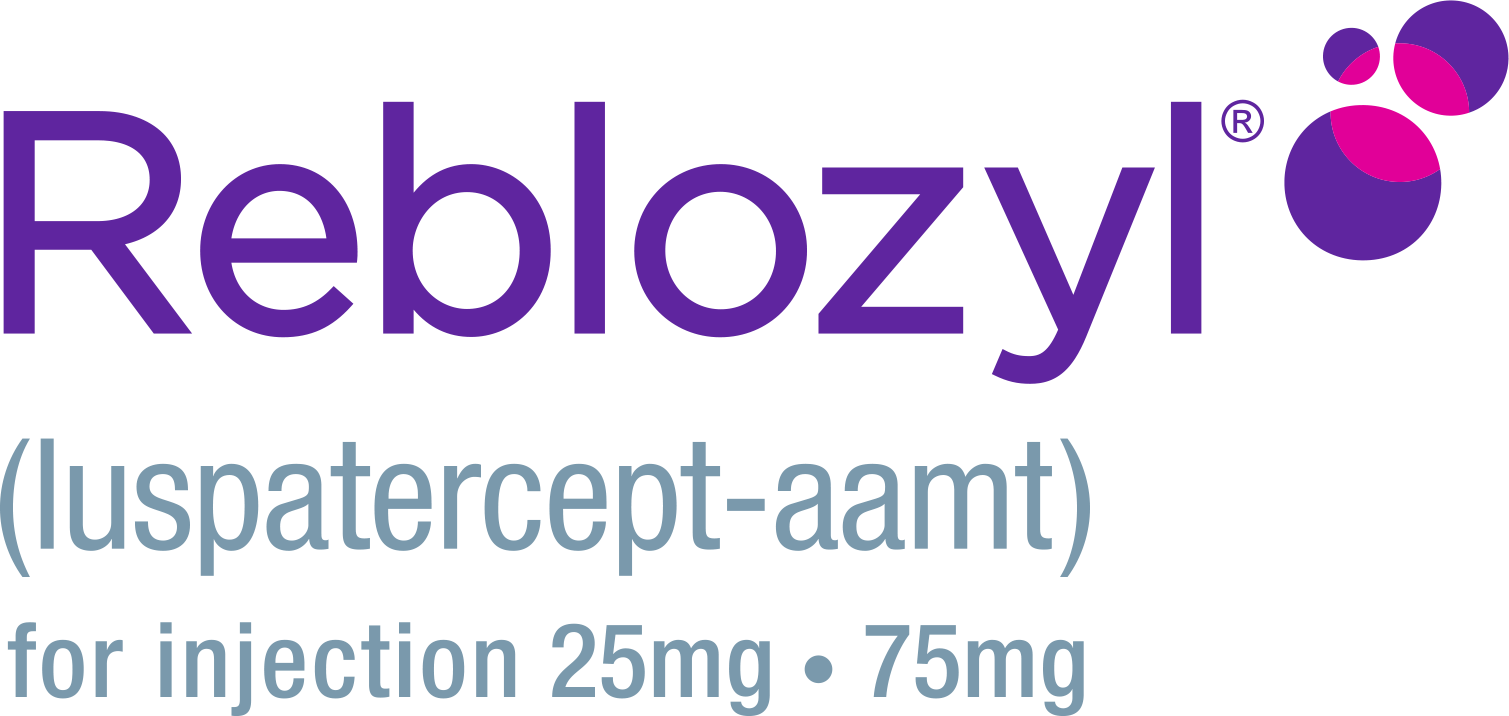How is MDS diagnosed?
Your healthcare team can diagnose MDS by running various tests on your bone marrow and blood samples. These tests help your healthcare team diagnose your type of MDS by answering the following questions:
- Do you have cytopenias?
- Do the cells in your bone marrow look normal or abnormal?
- How many abnormal cells are present in your bone marrow?
- How many immature or early forms of blood cells (blast cells) are present in your bone marrow?
- What are the types of blood cells that look abnormal?
- Are there cells with rings of iron, often called ring sideroblasts (RS)?
- Do the cells in your bone marrow have gene mutations, like SF3B1?
What does it mean to have ring sideroblasts (RS)?
In a type of MDS called MDS-RS, immature red blood cells (RBCs) pile up in the bone marrow. Many of these piled-up RBCs are a type of immature RBC called ring sideroblasts (RS). RS cells have a ring of small circular iron clumps around the center structure of the cell where most cells store DNA. RS contribute to having low (red) blood cell counts.
How many RS you have is part of diagnosing your type of MDS. You can be diagnosed with MDS-RS if at least 15% (15 out of every 100) of your red blood cells are ring sideroblasts.

Ring Sideroblasts (RS)
What is SF3B1?
SF3B1 is a kind of specific gene mutation that is common in MDS. If blood test results identify you have this specific gene mutation in your blood cells, you only need an RS percentage of 5% for your MDS type to be MDS-RS. The SF3B1 mutation is very common and seen in as many as 80% of people with MDS-RS.

What happens after I’m diagnosed with MDS?
After your healthcare team has confirmed that you have MDS, they will give you a risk score. This score helps your healthcare team understand the chances of your MDS getting worse.
Your risk score is one important factor in predicting how your MDS might affect you as time goes on. However, it’s not the only one. Your doctor will look at other factors, such as your age, your ability to perform daily tasks, the severity of your symptoms, and your recent blood test results.

How does my doctor know my risk score?
Risk scores are based on many factors, including:
- The number of blasts (immature or very early forms of blood cells) in your bone marrow, compared with normal mature cells
- The type and number of mutations in your cells
- The level of RBCs in your blood
- The level of platelets in your blood
- The level of white blood cells (WBCs) in your blood
Scores are given to each factor and then added up for an overall risk score. Risk scores can range from “very low” to “very high.”
A lower score means a lower risk of your MDS becoming a more serious condition, so make sure to stay connected with your healthcare team about your risk score.

If you’re worried about your risk score or the severity of your symptoms, consider talking about your concerns with other people who have MDS, your healthcare team, or even a counselor.
How is MDS-related anemia diagnosed?
To see if you have anemia, your healthcare team will measure the amount of hemoglobin (Hgb) in your blood. They do this because RBCs have Hgb, the part of the cell that carries oxygen through your body. Since many people with MDS don’t have enough mature RBCs, they may also have low levels of Hgb, which often leads to an anemia diagnosis.

Looking for more information?
Download the MDS Education Brochure
Want to know more about how your risk score impacts your treatment plan? The MDS Education Brochure has even more information about what goes into diagnosing and treating MDS and MDS-related anemia.
How can I care for my mental health after diagnosis?
When you’re coping with an MDS diagnosis, caring for your mental health is important. You can start by doing things like:
- Talking to people you trust about what you’re going through
- Regularly speaking to a therapist
- Connecting with support groups for people living with MDS
- Consistently seeing family and friends
- Getting enough sleep and not pushing yourself physically
- Making time for easy entertainment, like watching TV or reading a good book
- Getting outdoors when the weather is good, even if it’s just to sit on the porch
- Nourishing yourself with good food and staying hydrated

Connecting with community can help
You’re not alone. Your friends and family want to help you however they can, so don’t feel bad about leaning on them and asking for support. Many people living with MDS also find it helpful to connect with advocacy groups that provide disease education, additional support, and expert opinions related to MDS. Make sure you talk to your healthcare team before making any lifestyle changes.


